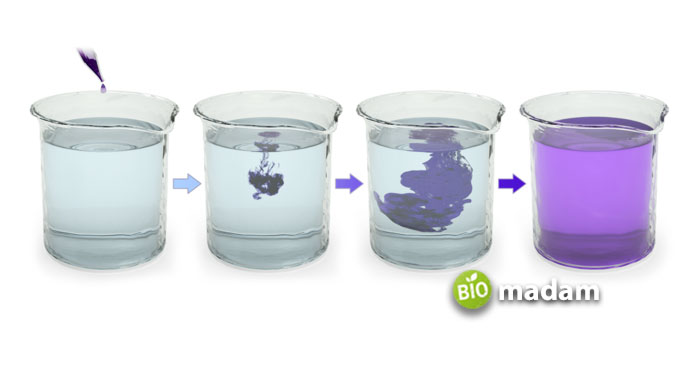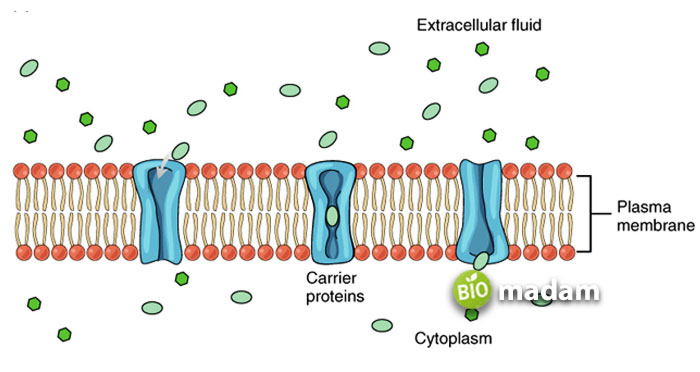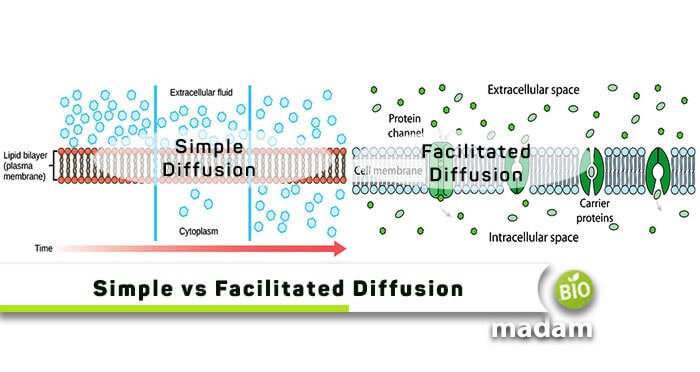Diffusion is a fundamental process that occurs in all living organisms, facilitating the movement of essential molecules across cell membranes. It is a vital mechanism that maintains the delicate balance of substances within cells and ensures proper cellular function. While diffusion may seem like a straightforward concept, there are different types that operate distinctly. Two notable forms are simple diffusion and facilitated diffusion.
Despite sharing some similarities, these processes exhibit unique characteristics that define their roles in cellular transportation. Understanding how do simple and facilitated diffusion differ is crucial for grasping biological systems and appreciating the ingenious mechanisms that sustain life.
In this article, we will explore the key similarities and differences between these two diffusion types, shedding light on their distinct mechanisms and importance in maintaining cellular homeostasis.
What is Diffusion?
The movement of elements from a higher concentration to a lower concentration region is called diffusion. People often confuse effusion with diffusion, but the latter is a process that works on the passive phenomenon. It means diffusion requires no energy. Besides, the gradient is more than enough to drive the process.
There are typically two types of diffusion processes, which have their similarities and differences. These are further named simple diffusion and facilitated diffusion.
- Simple Diffusion: It is a type of passive transport of molecules that, as the name suggests, is merely unassisted by transmembrane.
- Facilitated Diffusion: On the other hand, it is the spontaneous transport of molecules or ions across a cell’s membrane. Facilitated diffusion requires specific transmembrane proteins to process in a cell.
Simple and Facilitated Diffusion Examples
We can encounter a variety of examples relating to simple and facilitated diffusion in our daily life.
Simple Diffusion

- Similarly, the phenomenon even runs within a cell, where the chloroplast and mitochondria play a vital role in permitting molecules to pass through it via simple diffusion.
- Moreover, the exchange of gases between lungs and blood, the mixing of gases in the atmosphere, and the absorption of nutrients by bacteria are examples of simple diffusion.
Facilitated Diffusion
- The transfer of glucose in all parts of a body to provide energy follows facilitated diffusion. Since these complex molecules cannot process independently, they require glucose transporters and energy to diffuse. Hence, it falls under facilitated diffusion examples.
- Similarly, the transfer of ions like calcium and potassium within a body runs through this type of diffusion.
- In addition, the movement of oxygen in the blood with the help of hemoglobin and the transport of amino acids from the blood to the cell are examples of facilitated diffusion.
Similarities between Simple Diffusion and Facilitated Diffusion
The following chart will help you clarify the similarities between both diffusion types.
| Simple Diffusion | Facilitated Diffusion | |
|---|---|---|
| Diffusion Types | Yes | Yes |
| Helps Equalize Concentration | Yes, but through passive transport | Yes, but through active transport |
| Direction of Flow | Higher to lower | Higher to lower |
Simple Diffusion: The membrane is freely permeable to the molecules, so their movement does not require energy utilization.
- Simple diffusion is a type of passive transport, which means no energy is required.
- Furthermore, it works with the concentration gradient, which means it goes from a high concentration area to a low concentration area.
Facilitated Diffusion: In facilitated diffusion, the membrane is not freely permeable to the molecule, for example, hydrophilic substances. So, their movement across the cell requires specialized proteins, which will help them clear the plasma membrane barrier.

- Facilitated diffusion is also a passive transport type; thus, no energy is required.
- Facilitated diffusion also works with the concentration gradient, going from a high concentration area to a low concentration area.
Differences between Simple and Facilitated Diffusion
It’d be easy to understand the differences if we first glance at a brief comparison table between the two!
| Basis of Comparison | Simple Diffusion | Facilitated Diffusion |
|---|---|---|
| Directional or Non-Directional | Non-directional | Directional |
| Size of Molecules | Small | Large |
| Nature of Molecules Passing | Non-Polar | Polar |
| Source of Diffusion | By Phospholipid Bilayer | Through the Transport Proteins |
| Process Type | Passive | Active |
| Protein Channel Requirement | No | Yes |
| Solute Specificity | No | Yes |
Speed
- The simple diffusion speed is relatively low.
- Facilitated diffusion, on the other hand, is somewhat higher concerning speed.
Size of Molecules
- Simple diffusion is primarily occupied in the route of small non-polar molecules.
- In contrast, facilitated diffusion is generally involved in moving large and polar molecules across a biological membrane.
Driving Force
- The simple diffusion driving force is the concentration gradient across the membrane.
- On the other hand, for facilitated diffusion, the distinction in the concentration of solute across the membrane is the driving force.
Solute Specificity
- The cycle of simple diffusion dissemination is not solute explicit.
- On the contrary, facilitated diffusion is directed by the specificity between solute and carrier molecules.
Energy Requirement
- No energy is required because a simple diffusion is a passive transport mechanism.
- Some facilitated diffusion processes are also passive transport mechanisms, but most of them are active. Thus, requiring energy to diffuse.
Direction of Movement
- In simple diffusion, the movement of particles occurs along the path of the concentration gradient.
- In facilitated diffusion, molecules’ movement can happen in the direction and also opposite the concentration gradient.
Inhibition
- An inhibitor molecule does not inhibit simple diffusion.
- In contrast to simple diffusion, specific inhibitor molecules can inhibit facilitated diffusion.
Channel Proteins
- In simple diffusion, the movement of molecules occurs through the general surface of the membrane.
- Gated channel proteins, channel proteins, and also carrier proteins are the main complex transport proteins in facilitated diffusion.
Conclusion
Whether the process is simple or facilitated diffusion, they both demand a concentration gradient. Diffusion comes in several types where these two, simple and facilitated, are the most utilized in routine human body processes. The similarities and differences mentioned above are sufficient for anyone wanting to clear the concepts.

Amna being a Physicist wants to share her subject expertise and knowledge with people. Amna is a highly energetic and motivated lecturer as well.

